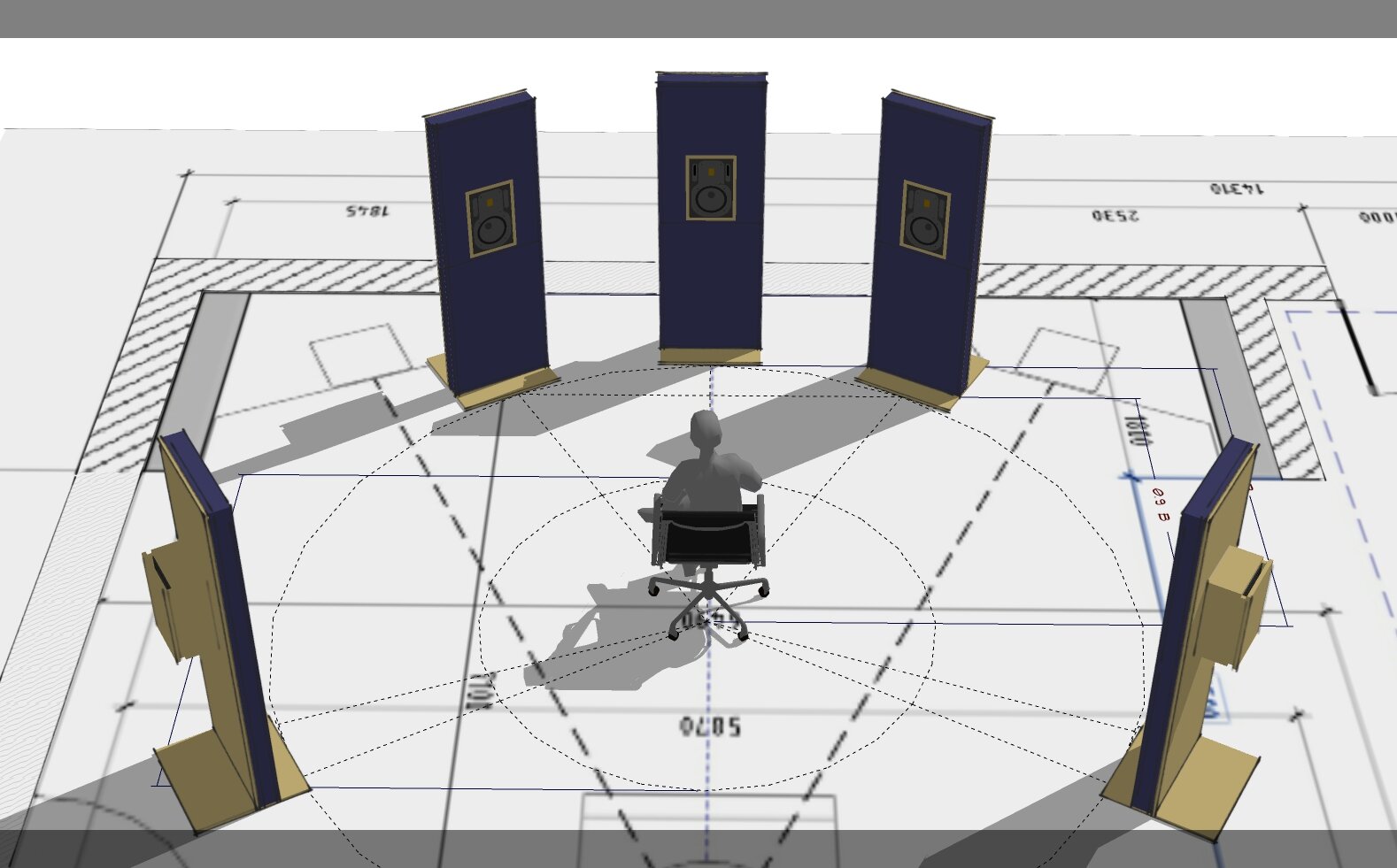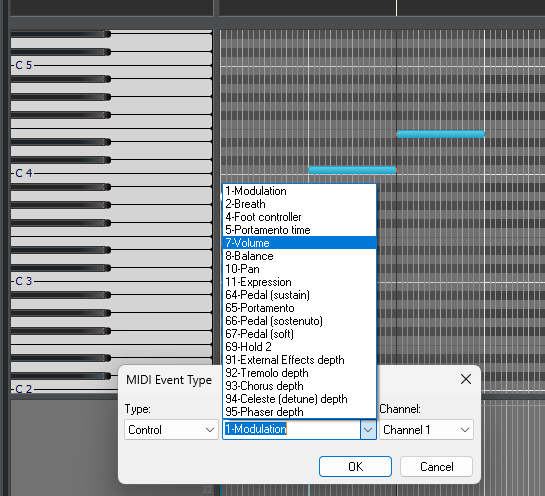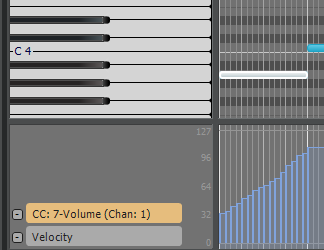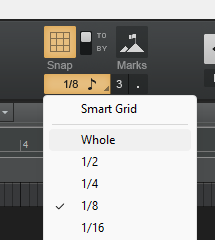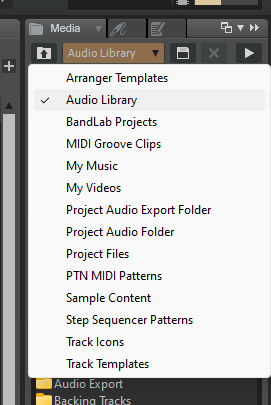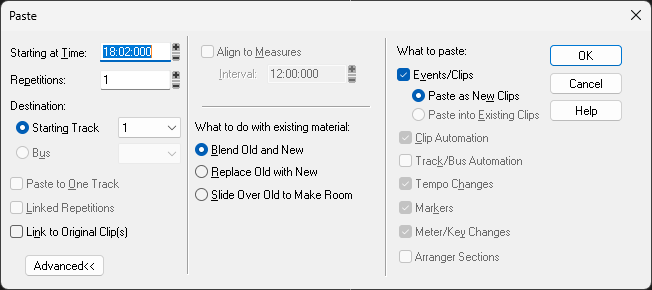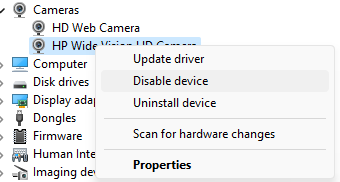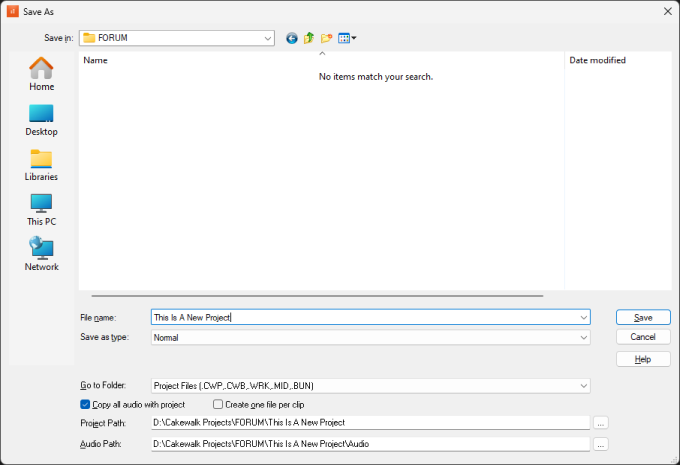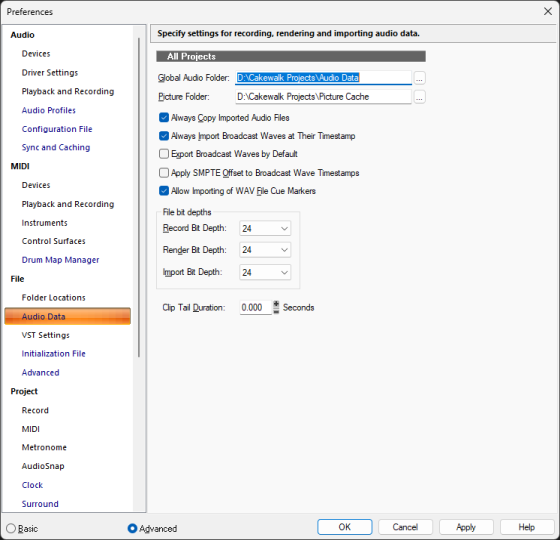-
Posts
2,176 -
Joined
-
Last visited
Everything posted by Glenn Stanton
-
or spend $9... https://www.amazon.com/Portable-Keyboard-Computer-ChromBook-Calculate/dp/B0871J67HD/
-
usually each full Ample instrument is 5x that bundle price - so if it's legit then i'd get it. i have 8 ample instruments (basses, guitars, slide, banjo) and they're excellent. not sure what the differences are between lite and full - think some are # of samples, round-robin, and some articulations. i also use the AAS strum, and rarely, the UJAM silk2, mellow, and amber2
-

Any way to search across multiple projects?
Glenn Stanton replied to A Tolerable Quietude's topic in Cakewalk by BandLab
well, the creative stuff is one thing, the post project cleanup, documenting and archiving is just a bit of work. of course if you decided to have 10-12 special FX on each of a 200 track project, then it might stifle your next project schedule a bit... LOL -

Any way to search across multiple projects?
Glenn Stanton replied to A Tolerable Quietude's topic in Cakewalk by BandLab
or go old school and keep copious project notes in something like a text file (e.g. notepad++) ... ? then the Windows search can find it... also useful for later when your plugins "age out" and are no longer available in that project you just opened 15 years later and the settings you wanted to get are not to be found... except that one time you wrote them down so you would remember that really cool effect you used on the ... sometimes lately i've been taking screenshots and pasting into Google slides as a record as well as my text files. not searchable per se but still handy. -
always a good idea to future-proof via your archiving process convert all MIDI tracks to audio consider exporting tracks as WAV files separate from the project - the export dialog makes this fairly easy. a. consider exporting clean as well as effects-printed tracks - more storage but more future options then make a new ARCHVE (copy files with project set on) of the project into a new (in my case sub) folder and copy in notes, lyrics, etc, so it's all fresh and current with your latest mix i do this on each project, regardless of whether i think i'll be using CbB, or Sonar, or PT etc sometime down the road (if i live that long). i wish i had adopted this 20 years ago (instead of 10) but c'est la vie
-

no audio and stop playback not working
Glenn Stanton replied to mark skinner's topic in Cakewalk by BandLab
MS Edge and a number of other products don't respect the "my updates are turned off" settings... -
dude! it's right there * clear as day. you have to squint slightly and cross your eyes (apologies if you're a pirate)
-

no audio and stop playback not working
Glenn Stanton replied to mark skinner's topic in Cakewalk by BandLab
what else happened? windows updates? other software updates? (MS Edge for example)? i'd re-run the CW redistributables to make sure nothing got changed during your connection time if you bypass the sound reference ID and go directly to the IO unit does it produce sound? -
why not make both the clip and the project tempo the same? ? also, assuming you have the original clip lined up correctly on the time line, myself, i simply split the clip on an empty spot (say 1:01) and on the end. clear off the ends. then copy and paste or crtl-drag the clip to the next #:01 mark. so if i have a clip from 1:01 to 12:04, then a place my next clip on 13:01. and if the tempos are correct, then it should align.
-
how many different tempos do you have?
-

Was Sonar Plat last TTS-1 version?
Glenn Stanton replied to Pathfinder's topic in Cakewalk by BandLab
5 of 100 = 20 each. 20 * 4 = 80 ? 4 of 5 = 80/20 vs. 2 of 3 = 66/33 (with 1 leftover) ? -
most times i would add some automation, but for a B3 organ with multiple controllers going on - leslie speed - expression - volume - drawbar selection - manual selection etc i like it all in the MIDI bits ? plus if you regenerate the audio you can lose the automation...
-
-

Was Sonar Plat last TTS-1 version?
Glenn Stanton replied to Pathfinder's topic in Cakewalk by BandLab
well, some people need at least 5 videos to fully know the answer. ? you cannot get to 80/20 with only 3 videos. c'mon man! -
the scale velocity for the "block" chords would only change the velocity step on the next set of notes. i.e. i have 8 chords in 2 measure - each chord will step up (or down) for those measures. so you need to use a different method if you want the chord levels to change - example - i want a 1 bar chord to "swell" from 20% - 100% - then you need to use a "volume" control not a velocity control. and a volume control could be the "attack" time on the strings (if all things being equal the chord are all similar length and spacing). but more commonly the "volume" (CC-7) or "expression" (CC-11) control depending on instrument. then draw the volume / expression values
-
thanks! i was sort of joking when i said modern blues but as i was trying to find a bucket for them on one of the sites i post to, which had "Blues - Modern" and i was like, "hey, this is kind of a blues number"... so there it is...
-
yes in listening back - this may be due to the third vocal "invisible" which is very breathy and tense so i may remove it for those parts. thanks for the offer!
-
the strings are a combination of the sforzando SF "Ethan's Cello" (cello - needed more attack than most of my other libraries) and the violins are Sine Player long major chord sustain.
-
pretty sure it's coming soon...
-
make sure you have snap to grid on - this will help to make sure your position is aligned on the setting - e.g. 1 bar (whole), 1/2, 1/4, 1/8 etc. in paste special, you can set the position directly. paste special: i have a content drive which has all the audio and midi files for all my instruments, plugins, and misc files. and in my preferences, i have that set to the cakewalk audio library as a starting point.
-
a modern blues number about the mystery of the break up and how our unbreakable pride can keeps things on a collision course for failure. ? BPM 86 Key C Meter 4/4 Lyrics -------------------------------------------------------------------- something silver, shiney, and caressed something close to her heart says i'm batting second best so how'd we end up in this big old mess? i wanna know she got her reasons and i got mine it's a sorryful thing to be hung by pride pride she won't break and i won't cry no, i won't cry i won't cry seven reasons then i wept to rest she's always right in the fight about second best so how'd we end up in this big old mess? i wanna know she got her reasons and i got mine it's a terrible thing to be hung by pride pride she won't break and i won't cry no, i won't cry i won't cry something here that we both can't stand drowning in wine didn't lend a hand we both agreed this ain't nowhere to be and now we're free free something silver, shiney, and caressed something close to her heart says i'm batting second best so how'd we end up in this big old mess? i wanna know she got her reasons and i got mine it's a pitiful thing to be hung by pride pride she won't break and i won't cry no, i won't cry i won't cry i won't cry i won't cry no
-
@GIM Productions and i think someone already created as "flat" theme for CbB so you can contrast and compare ?
-
win+X -> device manager -> find the device -> right-click & disable. otherwise if it's a class-compliant USB device, it will just keep installing. then remove it from your CW audio device preferences. you cannot actually ever delete it...
- 1 reply
-
- 1
-

-

project & audio files locations...
Glenn Stanton replied to Rob Heflin's topic in Cakewalk by BandLab
hmmm. so in the save or save as dialog (either from the file -> new menu, or a template sourceed project) you should see the folders that will be created under the project folder: so, you'll have the project folder, the CWP file, and the Audio subfolder. then inside that project folder, as you do things in the project, you may see other folders pop up (some temporary like "mix scenes", or "melodyne" etc), and once you do an export, "Audio Export" containing the output from that process. if you're not seeing that being created (and as far as i know Cakewalk has been the same in this folder creation for the project, CWP, and audio for what? 20 years? longer likely). the key is to make sure you checked the "copy all audio with project" otherwise it will dump things into your generic project and audio data folders - which you can find in the preferences.

